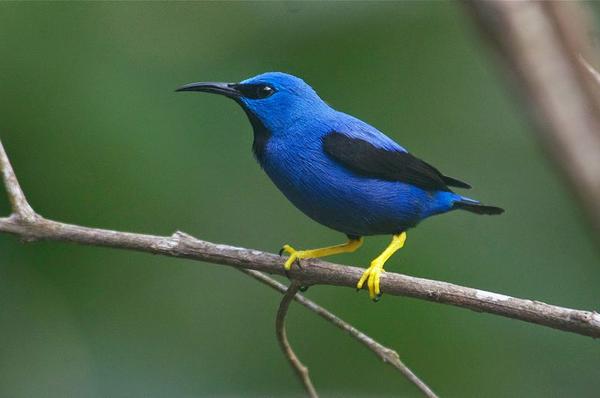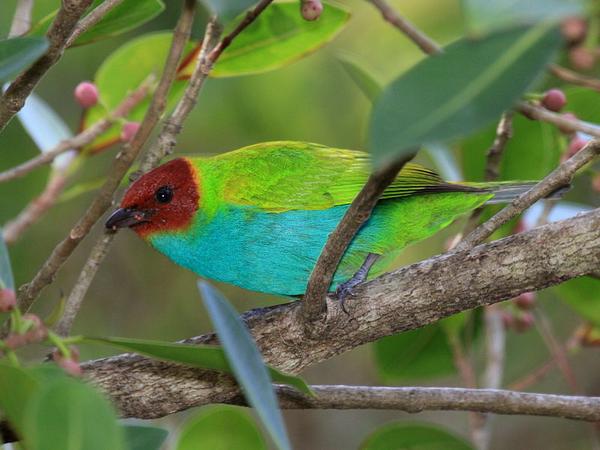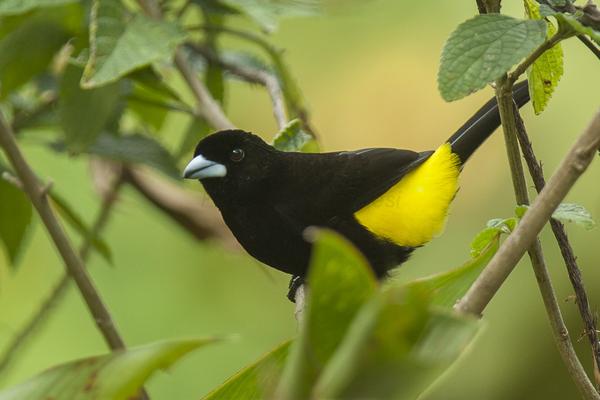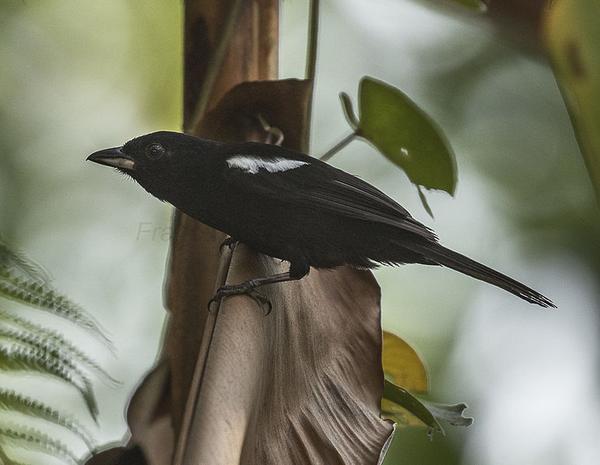
Before I left for Panama I wondered, Would I see any new tanagers there? I’d been to Costa Rica all the way to the Panama border so surely every tanager would be the same. Not so!
60% of all tanagers (Thraupidae) live in South America. Some of the southern birds have seeped into eastern Panama because it borders Colombia. Those that prefer South America don’t make it to Costa Rica because the topography and habitat change in western Panama. Eight of my 97 Life Birds in Panama were tanagers.
Here are just a few of the most colorful tanagers we saw last week. Some of them occur in Costa Rica and one of them, the bay-headed tanager, was a Life Bird for me last year.
The crimson backed tanager (Ramphocelus dimidiatus), at top, shows a flash of red from below. His beak stands out because the lower mandible is bright blue-white. He reminds me of Costa Rica’s Cherrie’s tanager.
In Cerro Azul we saw lots of shining honeycreepers (Cyanerpes lucidus) at the hummingbird feeders. Check out those bright yellow legs!

Gray-headed tanagers (Eucometis penicillata) are even prettier than this. Their backs are the color of green olives.

Bay-headed tanagers (Tangara gyrola) are as colorful as painted buntings. I first saw this bird in Costa Rica but he’s worth a second look.

This flame-rumped tanager’s (Ramphocelus flammigerus) yellow color is a regional characteristic in Panama. He used to be called the lemon-rumped tanager for obvious reasons but he was lumped with flame-rumped tanagers because they interbreed. His Colombian relatives have bright orange-red rumps.

And finally, the white-shouldered tanager (Tachyphonus luctuosus) resembles a red-winged blackbird but his beak shows us he’s not in the blackbird family.

In Panama there are tanagers galore!
(photos from Wikimedia Commons; click on the images to see the originals)
WOW! 97 Life birds!
Of note, our “tanagers”, like Scarlet Tanager and other members of genus Piranga, are evolutionarily closer to species like Northern Cardinal and Indigo Bunting, than to what we might call “true tanagers”, like those Kate found in Panama. Researchers base this new view on DNA sequence comparisons.